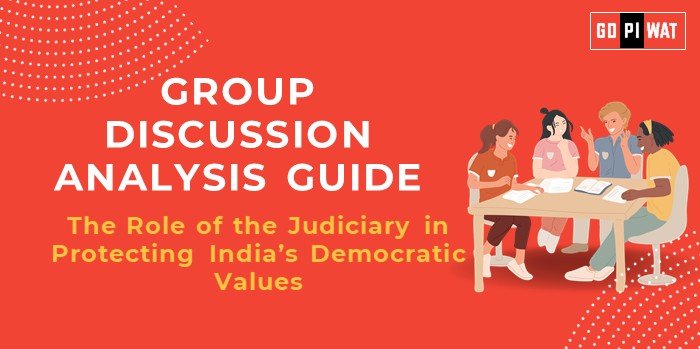⚖️ The Role of the Judiciary in Protecting India’s Democratic Values
🌐 Introduction to the Topic
- 📝 Opening Context: “The judiciary serves as the custodian of India’s democratic ethos, balancing constitutional mandates and public accountability.”
- 📜 Background: India’s judiciary, especially the Supreme Court, has played a critical role in ensuring the democratic fabric is protected against legislative or executive overreach. Judicial interventions in landmark cases like Kesavananda Bharati (1973) and S.R. Bommai (1994) have cemented this role.
- 🔗 Relevance: With increasing polarization, judicial vigilance remains vital to uphold democracy.
📊 Quick Facts and Key Statistics
- ⚖️ Judicial Pendency: Over 4.5 crore cases are pending across Indian courts (2023).
- 📚 Constitutional Bench Decisions: 13% of judgments in 2022 addressed constitutional matters.
- 📉 Judiciary Strength: India has about 21 judges per million people, far below the global average of 50.
- 🕊️ Significant Rulings: Over 35% of landmark judgments since 1950 relate to democratic safeguards.
🤝 Stakeholders and Their Roles
- ⚖️ Judiciary: Upholding the Constitution, protecting fundamental rights.
- 🏛️ Executive and Legislature: Respecting judicial boundaries while implementing rulings.
- 🧑🤝🧑 Citizens: Engaging in civic responsibility to demand accountability.
- 📰 Media and Civil Society: Acting as watchdogs to highlight judicial lapses or overreach.
🏆 Achievements and Challenges
✨ Achievements
- 📜 Landmark Judgments: Kesavananda Bharati case ensured the Basic Structure Doctrine, safeguarding constitutional integrity.
- 🌈 Human Rights Advocacy: Intervention in cases like Section 377 (2018) and Triple Talaq (2019) upheld equality.
- 🗳️ Electoral Reforms: Striking down criminal defamation laws and ensuring transparency in election funding.
⚠️ Challenges
- 📈 Judicial Overload: Case pendency impairs timely justice.
- 📐 Judicial Activism vs Overreach: Blurring of constitutional separation of powers.
- 🌐 Accessibility: High costs and limited lower court reach hinder equitable justice.
🌍 Global Comparisons
- 🇺🇸 United States: The Supreme Court’s intervention in cases like Roe v. Wade showcased judicial influence over socio-political issues.
- 🇿🇦 South Africa: Judicial reforms post-apartheid emphasize accountability.
📚 Structured Arguments for Discussion
- ✅ Supporting Stance: “The judiciary ensures a level playing field by protecting constitutional values from executive excesses.”
- ❌ Opposing Stance: “Judicial overreach risks undermining democratic decision-making by elected bodies.”
- ⚖️ Balanced Perspective: “While judicial activism safeguards democracy, excessive intervention can impede governance.”
💡 Effective Discussion Approaches
- 📜 Opening Techniques:
- Historical Reference: “Since Kesavananda Bharati, the judiciary has shaped India’s democratic future.”
- Statistical Insight: “With 4.5 crore pending cases, judicial efficiency is under scrutiny.”
- 🛠️ Counter-Argument Handling: Acknowledge challenges like pendency and advocate reforms like AI-driven case management.
🔍 Strategic Analysis of Strengths and Weaknesses
- 👍 Strengths: Constitutional independence, diverse jurisprudence, checks and balances.
- 👎 Weaknesses: Pendency, low judge-to-population ratio, delayed reforms.
- 🌟 Opportunities: AI adoption, public awareness, legal aid expansion.
- ⚠️ Threats: Political interference, resource constraints.
📈 Connecting with B-School Applications
- 📘 Real-World Applications: Judicial efficiency ties to corporate compliance and public policy research.
- 📋 Sample Interview Questions:
- How can judicial reforms influence India’s economic growth?
- Discuss the impact of judicial activism on public policy.
- 📖 Insights for Students: Judicial independence is integral to legal, ethical, and policy frameworks in business.


